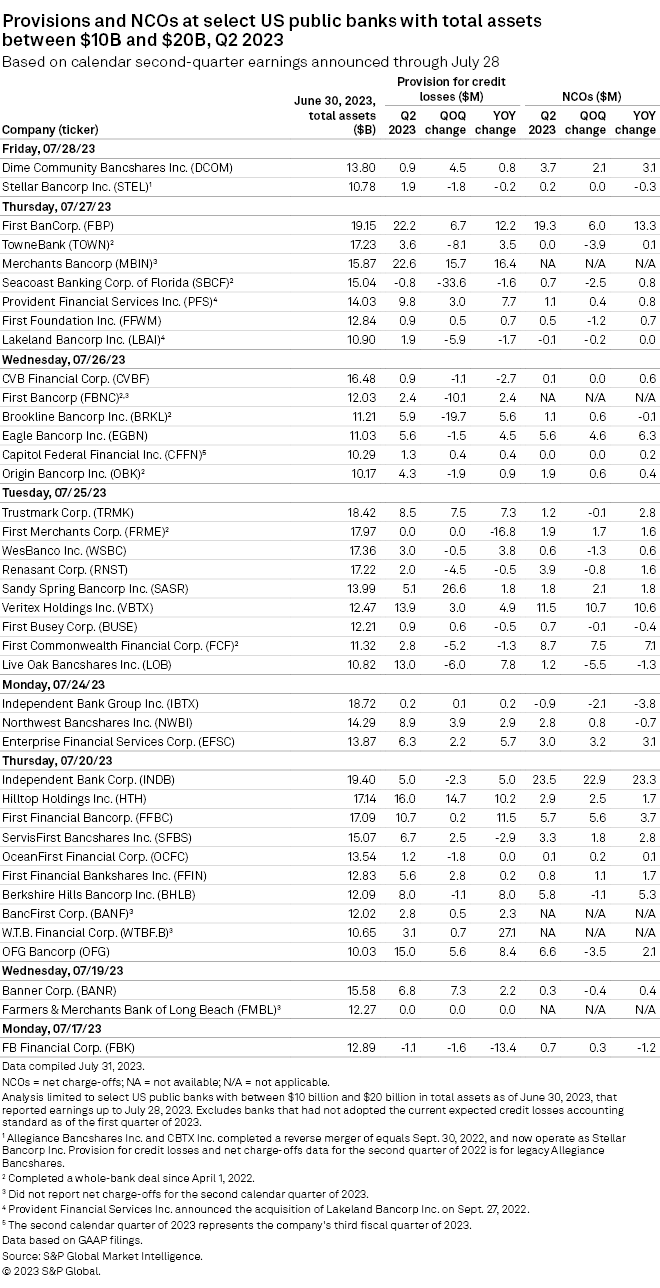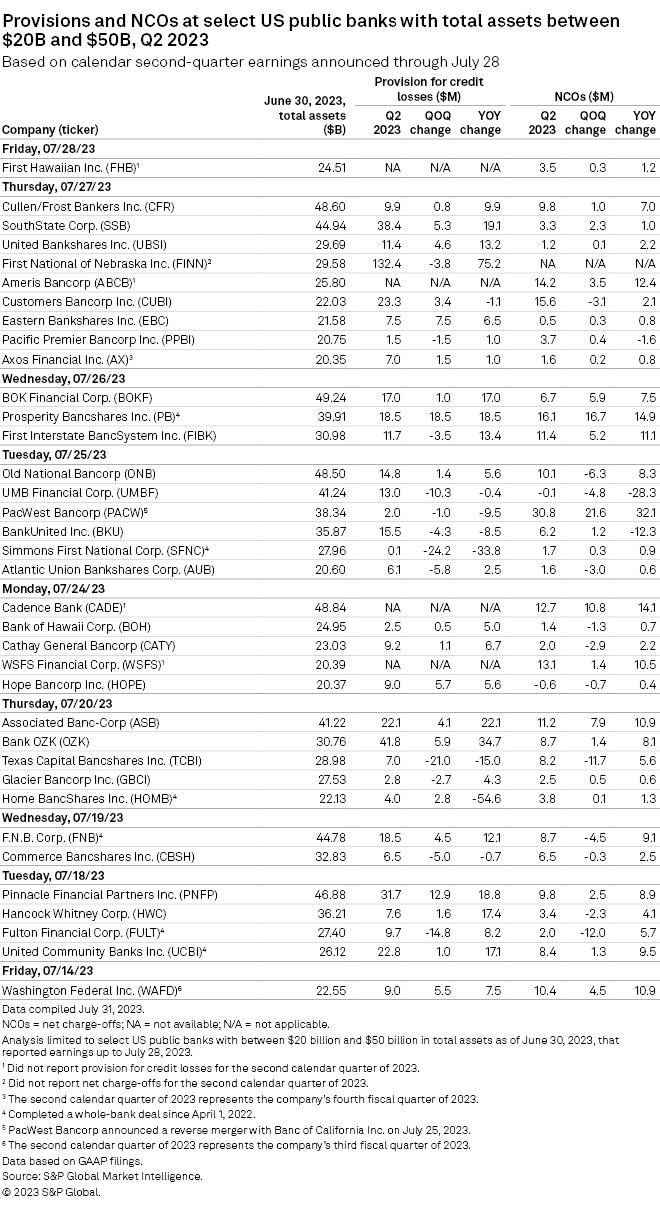Many US banks continued to recognize increases in credit costs amid rising net charge-offs and concerns about potential future credit deterioration. Provisions increased sequentially at nearly two-thirds of the banks included in an S&P Global Market Intelligence analysis that examined results from publicly traded companies with at least $10 billion in assets that had reported second-quarter earnings by July 28.

Provisions at $50B-plus banks
Among the largest banks, Bank of America Corp. reported a $1.13 billion provision expense, which included a $256 million reserve build. “The provision expense reflects the continued trend in charge-offs toward pre-pandemic levels, and it’s still below historical levels,” CFO Alastair Borthwick said during an earnings call.
Borthwick added that the company’s charge-off rate was 33 basis points, and that remains below the 39 basis points the company reported in the fourth quarter of 2019. Still, higher credit card losses and commercial real estate write-downs led to $869 million in second-quarter net charge-offs.
Wells Fargo & Co. increased its provision for credit loss by $506 million quarter over quarter and $1.13 billion year over year to $1.71 billion. The bank attributed the increase to its office loans exposure and growth in its credit card portfolio.
“While we haven’t seen significant losses in our office portfolio today, our detailed loan-by-loan review of the portfolio has given us a sense of how the next several quarters could play out,” President and CEO Charles Scharf said during the company’s earnings call. “We also considered a number of stressed scenarios, all of which informed our actions this quarter.”
JPMorgan Chase & Co. reported a $624 million sequential increase in provisions, but the increase was driven by a $1.16 billion reserve build tied to its acquisition of First Republic Bank assets.
Citi lowered its allowance for loan losses by $141 million quarter over quarter to $1.81 billion. The bank added about $300 million to its loss allowance for its personal banking and wealth management unit, mostly reflecting card loan growth, down from a build of about $500 million in the first quarter.
Smaller banks
At banks with assets between $10 billion to $20 billion as of June 30, provisions largely increased.
In the second quarter, Olney, Md.-based Sandy Spring Bancorp Inc. recorded the largest sequential increase at $26.6 million after it posted a negative provision of $21.5 million in the first quarter. In the second quarter, the company recorded a $5.1 million provision for credit losses, and that was primarily driven by a multifamily construction loan in the low-$20 million range, Chairman, President and CEO Daniel Schrider said during the company’s earnings conference call. Schrider added that the borrower is facing cash flow challenges because of low occupancy.
“Our review of the broader multifamily portfolio does not indicate any similar trends within other relationships,” Schrider said.

Among banks in the range of $20 billion to $50 billion of assets, Winter Haven, Fla-based SouthState Corp. recorded one of the largest second-quarter provisions at $38.4 million, which was driven by a change in the commercial real estate price index forecast, CFO William Matthews said during the company’s earnings conference call. Matthews added that the company is aiming to build loan-loss reserves “in the face of a possible recession.” SouthState recorded $3.3 million in net charge-offs during the second quarter.


































Discussion about this post